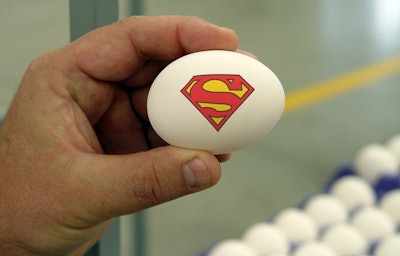
During the 22nd Previtep Week, I gave a presentation on the comparison between the poultry industry of the Mexican state of Jalisco - the country's poultry capital - and Latin America. In the question and answer session, one of the attendees asked me about my prediction of egg products over the next few years. Not knowing the answer, I threw the ball to food technologists.
With the celebrations of World Egg Day, I attended a webinar organized by the Spanish Institute of Egg Studies, the Association of Agri-Food Journalists of Spain and the National Association of Health Communicators, entitled "Egg, Much More Than the Perfect Protein." And I think I can now partly answer the question I was asked.
In the webinar, Dr. Marta Miguel, researcher at the Autonomous University of Madrid, spoke about egg products, and I liked the way she classified them into technological and culinary developments. She mentioned the well-known omega-3-enriched eggs, which, although not as successful as enriched milk products, they have found their niche in the market.
More recently, in Spain, they have developed the "Iberian eggs" (following the image of the gastronomic jewel of the "Iberian ham"), produced by free-range hens that are fed also with crushed acorns, which modifies the lipid profile and provides more oleic acid to the egg.
Then, she talked about technological developments, such as yolk fractionation to separate egg components and make membranes or biofilms. Also, blue eggs, of the Araucana hen, which do have less cholesterol. And the hyperimmune eggs, from which immunoglobulin Y - similar to IgG of the secondary immune response - is extracted, because it builds up in the yolk. IgY is extracted and used to obtain significant levels of antibodies, for treatments and diagnostic assays.
The hydrolyzed egg, developed by Dr. Miguel's research group, in which long proteins are cut, whose peptide sequences serve to control pathologies such as hypertension, diabetes or obesity, or to provide new textures to dairy products.
She finally spoke of the culinary side, such as the Spanish development of frozen fried egg, used in Burger King burgers, or the low-temperature eggs, pre-cooked and ready-to-eat, widely used in restaurants and hotels.
So, here I leave with you some ideas to stimulate minds to create. It's a good time during this World Egg Day and egg week. Dr. Marta Miguel said that egg, more than a superfood, is the Superman of foods, for its nutritional contribution, versatility, and low cost.
After all, a dozen eggs cost less than a single KN95/ FFP2 mask!
What do you think?
















